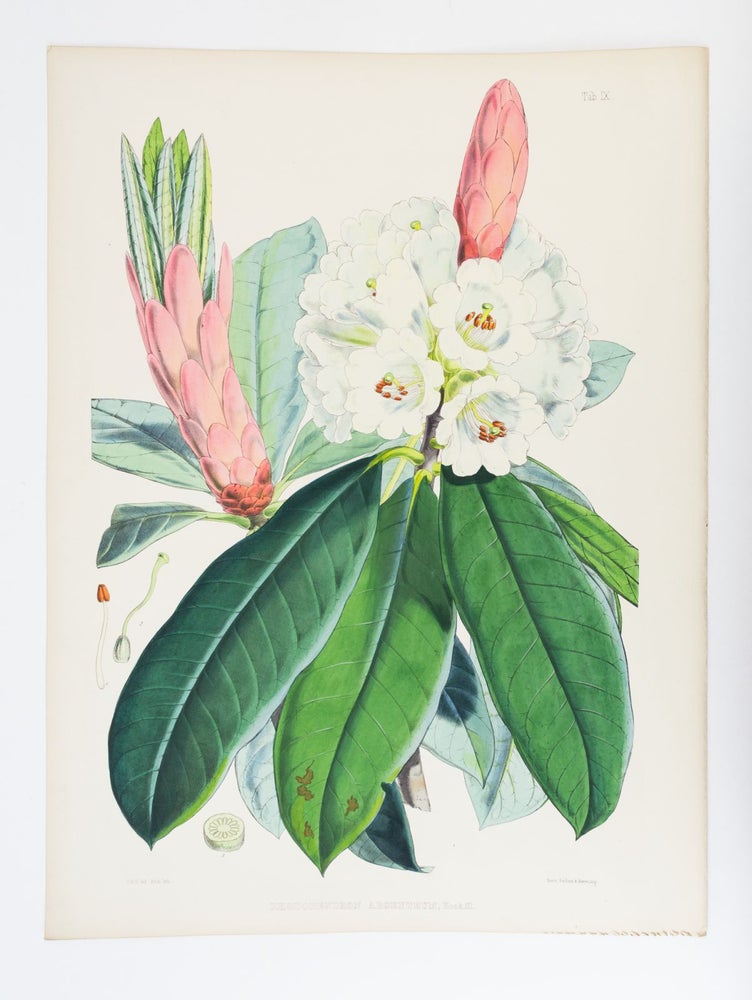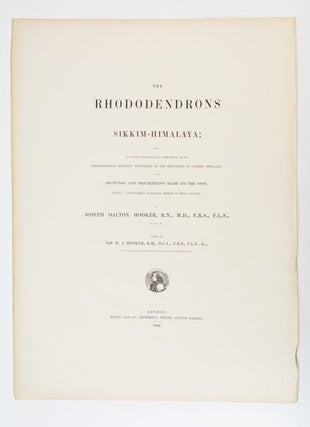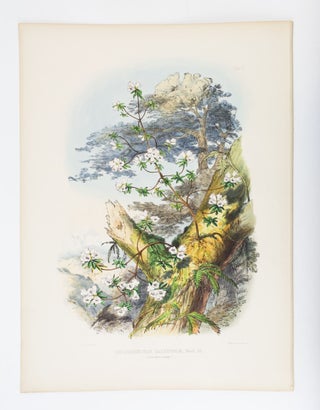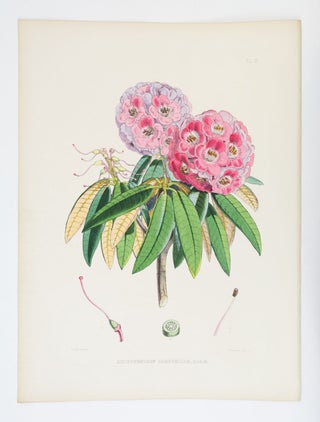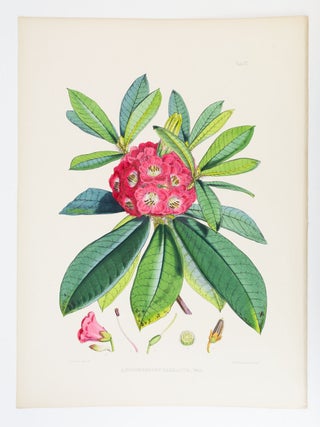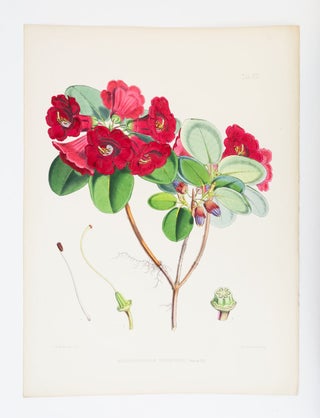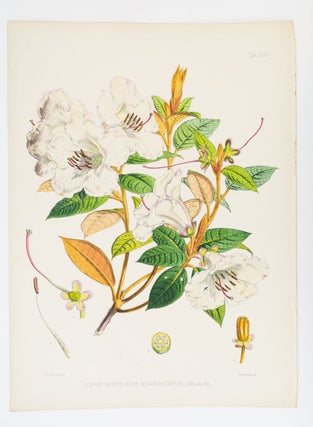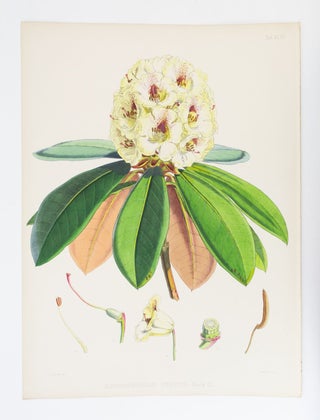THE RHODODENDRONS OF SIKKIM-HIMALAYA.
(London: Reeve and Co., 1849[-51]). 504 x 370 mm. (19 3/4 x 14 1/2"). 14 pp., [9] leaves; [1] p.l., 7, [1] pp., 20 leaves. (without section titles to parts II and III). Three parts in one volume. Edited by Sir William Jackson Hooker. FIRST EDITION.
Publisher's (defective) brown cloth with gilt lettering. WITH 30 HAND-COLORED LITHOGRAPHED PLATES by Walter Hood Fitch, with the original paper guards. Title page apparently a variant, without colored vignette. Pastedown with the bookplate of James M. Blackford III; frontispiece with the contents written in pencil on verso. Great Flower Books, p. 101; Nissen BBI 911. ◆Binding present, but the contents disbound. One paper guard torn, the occasional small spot, hint of dust soiling, or other trivial imperfection, otherwise the plates and text in very fine condition.
This work features a gorgeous array of rhododendrons from the Sikkim region in the eastern Himalayas, drawn "on the spot" during a British botanical mission to that region spearheaded by a close friend and early supporter of Charles Darwin. "Great Flower Books" describes the volume as "an important work both for the botanist and horticulturist since it contains descriptions and plates of many of the best garden Rhododendron species which can be grown in [England]." "An Oak Spring Flora" calls it "a fine example of Fitch's art. In his lithographs he has captured the exuberant form and colour of these flowering shrubs, many of which in this very period came to be acclimatized in European gardens." The author, Joseph Dalton Hooker (1817-1911), was the son of our editor, Sir William Jackson Hooker, who was the first official director of Kew Gardens. In 1848 the younger Hooker journeyed to Sikkim (a small state bordering Tibet, Nepal, and present-day Bhutan) with Dr. Archibald Campbell, Superintendent of the West Bengalese town of Darjeeling (in the Himalayan foothills). DNB tells us that Hooker "collected about 7,000 species in India and Nepal and on his return to England managed to secure another government grant while he classified and named them. . . . Hooker's and Campbell's travels added twenty-five new rhododendrons to the fifty already known and the spectacular new species they introduced into Britain helped create a rhododendron craze among British gardeners. Hooker's journey also produced his Himalayan Journals (1854), which were dedicated to Darwin." Although Hooker became a renowned botanist, published several important works, and succeeded his father as Director of Kew Gardens, his accomplishments are often overshadowed by the role he played in Darwin's story. According to DNB, Darwin and Hooker began writing each other in 1843 and enjoyed "a lifelong correspondence, through which the two became friends and collaborators." It was through their correspondence that Hooker was the first to know of Darwin's theory of natural selection. DNB touchingly notes that "as Darwin worked out the details of his theory over the next fourteen years the two men regularly discussed natural selection and Darwin would later acknowledge Hooker as 'the one living soul from whom I have constantly received sympathy' (Correspondence, 7.174)." A Scot from Glasgow, Walter Hood Fitch (1817-92) produced in excess of 10,000 drawings for various publications in his lifetime, and was considered among the very best botanical illustrators of the period. After 1841 Fitch was the sole official artist for publications issued by Kew Gardens, and he worked with Hooker in that connection for 36 years until a pay dispute ended their collaboration. He nevertheless remained in great demand elsewhere until he retired in 1888. Although our copy has lost its integrity as a book, it could obviously be rebound with considerable gain, especially since the plates remain so well preserved. (CMA2202)
Price: $9,500.00

